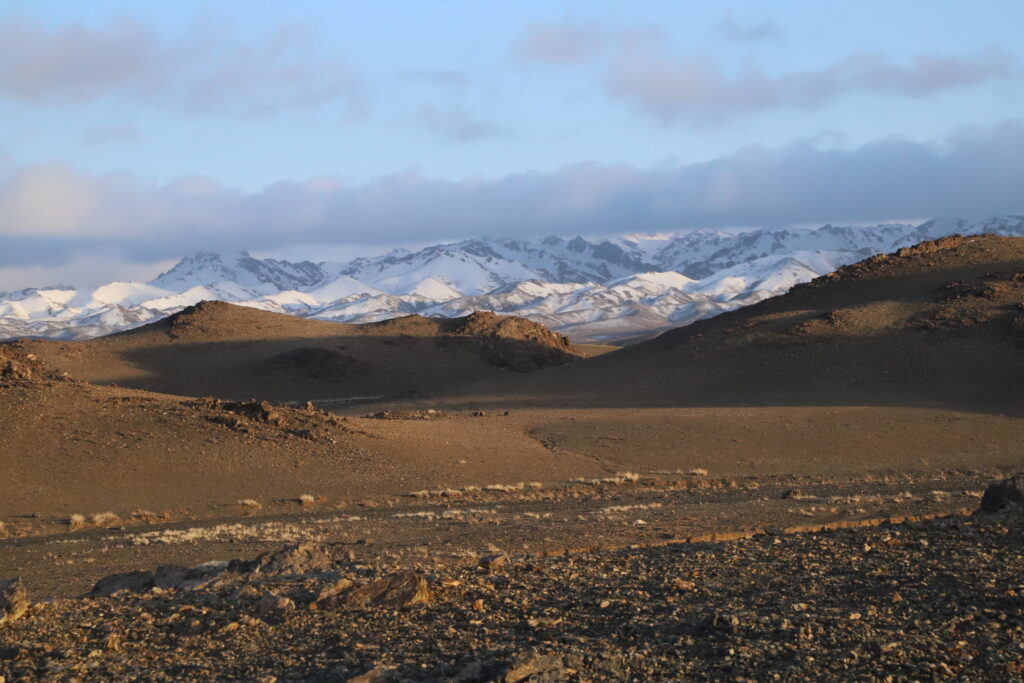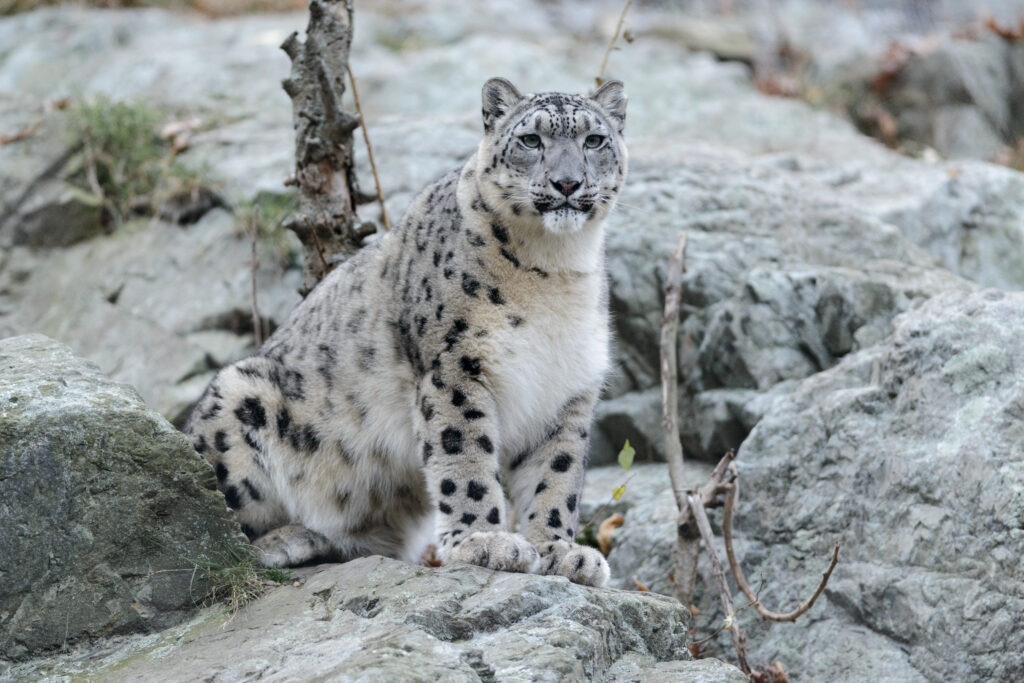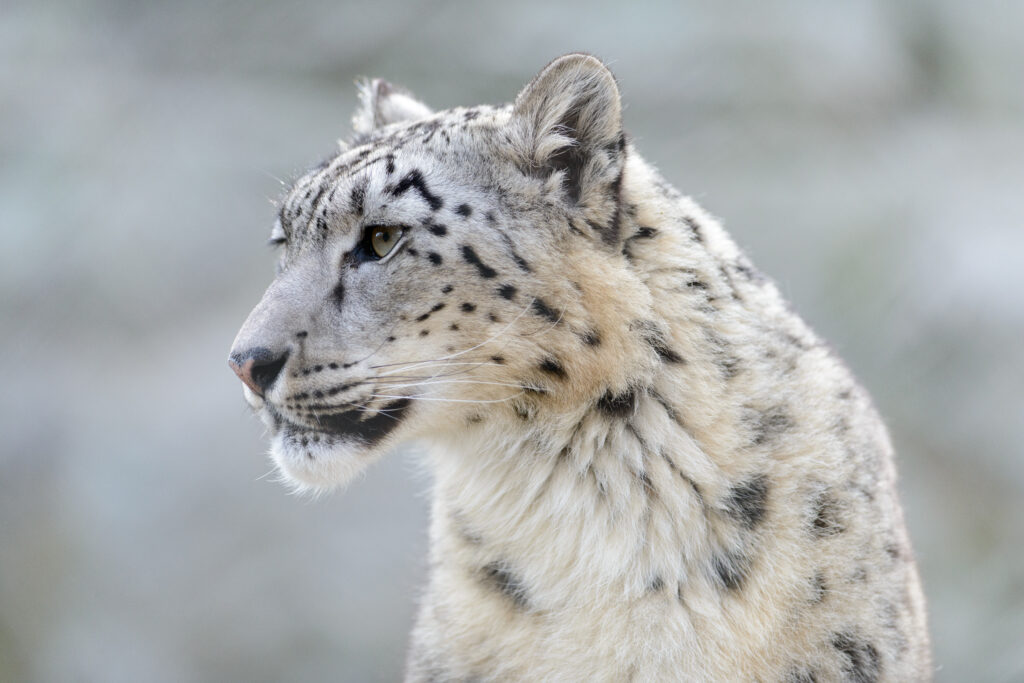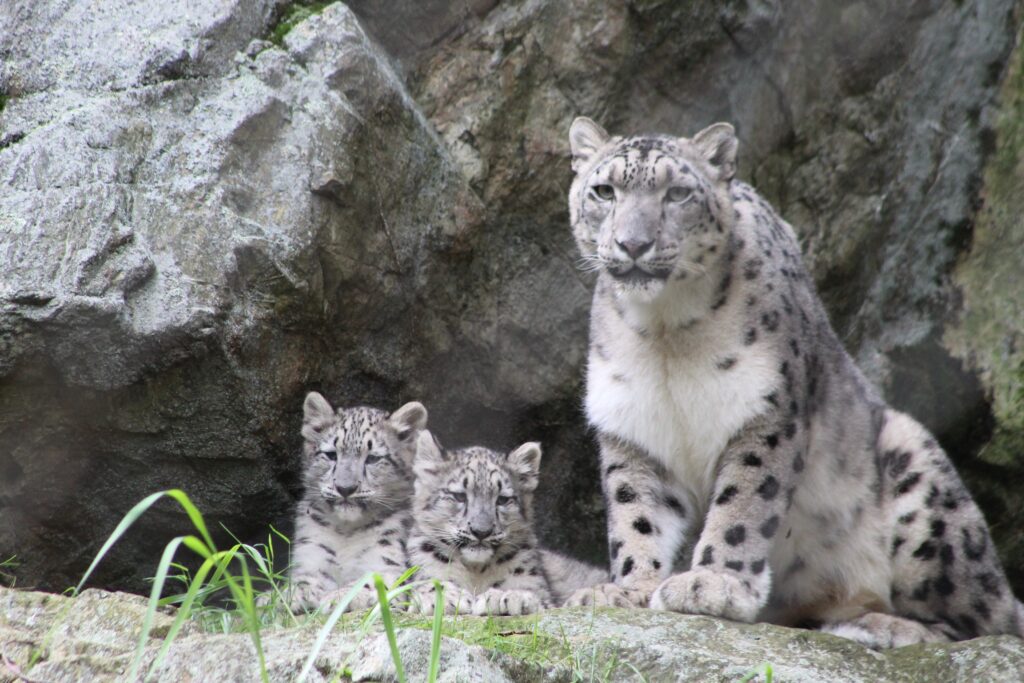
Snow leopards are one of the most mysterious large animals on earth. This is in large part due to their existence in one of the most remote and hostile environments on the planet – the gigantic mountain ranges of Asia. Largely created when the ‘island’ of India crashed into Asia some 50 million years ago, the resulting (and ongoing) collision thrust rocks up in some cases nearly 30,000 feet above sea level. The Himalayas, Karakorams, Hindu Kush, Pamirs, and Tien Shan are just some of the huge, ice-capped mountain ranges in this region.

Over the millennia an entire suite of creatures became adapted to this rugged and vertical landscape, especially the wild goats and sheep of Asia – the argali, urial, ibex, markhor, bharal, and others. The snow leopard followed suit, becoming incredibly well adapted to living in this cold, rocky world and capturing and feeding on these fleet-footed animals.
Zoo New England has a long and storied history supporting snow leopard conservation. We first became supporters of the Snow Leopard Trust in 1997 (!), and our support for their conservation work in Mongolia has been continuous over the years. As Director of Field Conservation at ZNE, I also sit on the IUCN Cat Specialist Group, serve on the newly created AZA SAFE Snow Leopard Program, and I am also a part of the IUCN Red List Assessment Committee currently working to reevaluate the snow leopard’s status (presently listed as Vulnerable).

Beginning in 2023 Zoo New England also now runs the Sabin Snow Leopard Program. This program, funded by the Andrew Sabin Family Foundation, provides grants to snow leopard conservationists in the big cat’s range states who are working to save, protect, and recover snow leopards in their high mountain home.
This year we are providing six grants to worthy recipients, from an initial pool of 25 applicants. The grantees are:
• Bayarmaa Chuluunbat, Mongolia: “Assessing the snow leopard population status and understanding herder perceptions of the snow leopard in the Khurkh Mountain Range, South Gobi.”
The primary goal of this project is to fill critical knowledge gaps about the snow leopard population and their interactions with herder communities in the Khurkh Mountain Range. This understanding is vital for developing effective conservation strategies that promote habitat connectivity between Gobi Gurvan Saikhan National Park and the Small Gobi Strictly Protected Area, while also supporting the livelihoods of local herders.
• Tazarf Shamirova, Tajikistan: “Testing data collection methods to evaluate the impact of herding practices on snow leopard prey in the Fann Mountains.”
The goal of this project is to better understand and accurately document the potential impact of livestock and Asiatic sheepherder dog on long-tailed marmot population in the Fann Mountainsof Tajikistan – marmots are a key prey species for snow leopards during the warmer months when these giant ground squirrels are not hibernating.
• Phub Dorji, Bhutan: “Securing harmonic coexistence between snow leopard and mountain communities.”
The primary goal of the project is to mitigate the impacts of human-snow leopard conflict and foster coexistence between snow leopards and mountain communities in Bhutan. There are three objectives working towards achieving the project goal: To improve human-snow leopard conflict mitigation measures by identifying and assessing human-snow leopard conflict hotspots in Bhutan; To enhance community engagement by conducting studies to understand local perceptions; and attitude towards snow leopard conservation; To mitigate the negative interaction of humans and snow leopards interaction through the implementation of corral fencing as an innovative solution.
• Jaffar Ud Din, Pakistan: “Community-based management of the human-snow leopard conflict in the Hindu Kush Landscape.”
The goal of this project is to promote participatory conservation in targeted valleys of the Hindu Kush landscape to reduce human-snow leopard conflict and improve local livelihoods. The project will inculcate a sense of stewardship for snow leopards and other wildlife in the local communities; curtail mass killing incidences of livestock by snow leopards and other predators in the project sites by constructing three predator-proof corrals; and improve local livelihoods by devising and implementing a compensation mechanism for livestock lost to snow leopards
• Francesco Rovero, Mongolia: “Completing a region-wide, standardized study of snow leopards in the Altai-Gobi to assess occurrence, density, conservation status, and co-occurrence with livestock and wild ungulates.”
This project will survey two areas to determine the occurrence and conservation status of snow leopard in the Altai-Gobi region of Mongolia with emphasis on patterns of co-occurrence with livestock and wild ungulates. Key objectives and related activities are: detect snow leopards and other mammals, including free-ranging livestock, by completing an extensive camera trapping survey; determine patterns of co-occurrence of SL with livestock, if present, other large carnivores and wild prey by analyzing data in co-occurrence framework; and provide area-specific and region-wide recommendations relevant to threat mitigation.
• Koustubh Sharma, Nepal, Bhutan, India, and Kazakhstan: “Expanding genomic tools for snow leopard conservation.”
This project addresses the challenge of accurately estimating snow leopards’ population size anddetermining the geographic origin of illegally traded wildlife products when detected. The project will prepare whole genome sequencing libraries in local labs in Nepal, Bhutan, northeast India, and Kazakhstan. Once developed, the project will also distribute the Single Nucleotide Polymorphism (SNP) panels to process confiscated products in-country.

Zoo New England is proud to continue providing this important support to snow leopard conservation so that this magnificent big cat can continue to survive and thrive in its high mountain home.
